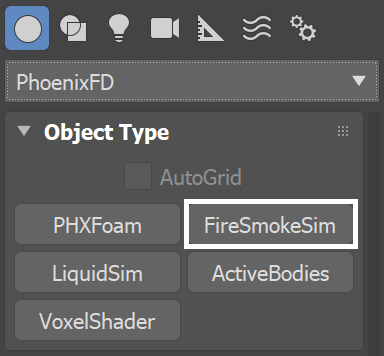Page History
This page introduces the FireSmokeSim object and its rollouts.
| Section | ||||||||||||||||||||||
|---|---|---|---|---|---|---|---|---|---|---|---|---|---|---|---|---|---|---|---|---|---|---|
|
Overview
...
| Div | |||||||||||||||||||||||||
|---|---|---|---|---|---|---|---|---|---|---|---|---|---|---|---|---|---|---|---|---|---|---|---|---|---|
| |||||||||||||||||||||||||
The Fire/Smoke Simulator uses a grid-based core (a 3-dimensional array of voxels). The simulated channels are transferred through the grid based on the specified parameter values. The result of the simulation is a sequence of cache files containing the simulated channels (Temperature, Smoke, etc). These cache files are used later in the rendering process to convert the raw simulation data into realistic images.
|
| Section | |||||
|---|---|---|---|---|---|
|
...
Rollouts
...
After creating a FireSmokeSim object, the following rollouts can be accessed in the Modify panel:
| Fancy Bullets | ||
|---|---|---|
| ||
|
...
Upgrading from Previous Versions of Phoenix
...
...
Due to many improvements to the Phoenix solver, recreating simulations the same way you did in older versions of Phoenix may not be possible because of changes to the solvers and the UI. Here are some things to be aware of when upgrading from older versions of Phoenix FD.
| Fancy Bullets | ||
|---|---|---|
| ||
If
|
...
|
| Viewtracker | ||||
|---|---|---|---|---|
|

